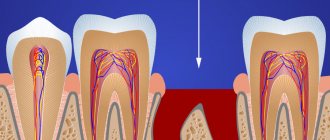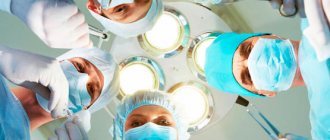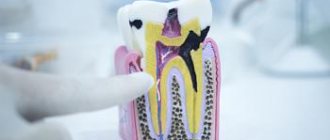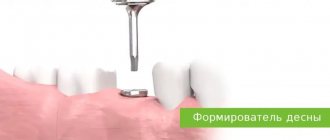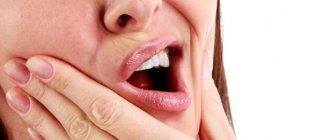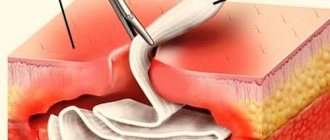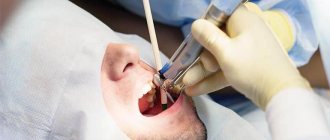Make an appointment
Published: 03/09/2020
Reading time: 3.5 min.
Number of reads: 15330
Rating:
Any surgical intervention, even the most gentle one, implies tissue damage, to which the body will react accordingly. Therefore, swelling after mammoplasty is normal. During the rehabilitation period, it gradually subsides, but if the discomfort is too severe, it is better to consult a doctor. The specialists will do everything possible to ensure that the patient’s recovery is comfortable.
Why a sinus lift can cause facial swelling
Sinus lifting is a modern surgical intervention on the upper jaw, with the help of which it is possible to quickly and effectively increase the height of bone tissue at the site of the planned implantation. The essence of the operation is to raise the bottom of the maxillary sinus (maxillary sinus), introducing grafts or bone growth stimulators into the resulting space to increase its volume.
It is carried out quite quickly and painlessly. We use a low-traumatic ultrasound protocol, but in any case, it is impossible to perform the operation without tissue damage . As with any surgical operation, the body's natural response occurs. It manifests itself as swelling due to the influx of lymph, a slight increase in temperature, and local soreness.
The operation can be performed using an open or closed method - they differ in the way they create access to the sinus, which determines the likelihood of edema occurring:
- Closed protocol The site of the intervention is the hole for installing the implant. Swelling after surgery develops infrequently and is insignificant in size.
- Open method Manipulations are performed through the anterior surface of the jaw bone. Therefore, it is often accompanied by swelling of the cheek and zygomatic area.
How does swelling occur?
After surgery, primary and secondary complications may occur. The former appear a few days or weeks later, the latter can occur within 2–3 months. Breast swelling after mammoplasty is an early complication and is a normal reaction of the body to a foreign body. At the same time, the tissues swell, the skin stretches, which can cause a non-standard color and shine. However, this does not indicate inflammation: on the contrary, swelling indicates that a recovery process has begun in the body. Interestingly, such a reaction can occur not only in the area of the operated breast, but also on the abdomen. This is observed in every third patient and also falls within the normal range. When swelling goes away after breast augmentation surgery depends on the individual characteristics of the body, but usually this process does not take more than two months.
Is swelling normal or a complication of surgery?
In the first days after surgery, swelling is normal due to soft tissue injury; this is a normal reaction to surgery. It decreases daily, and by the 5th day of the postoperative period not a trace remains.
Swelling should not be a concern for the patient if:
- has a clear localization at the site of the operation
- does not apply to healthy facial tissues
- the severity of swelling decreases daily
- not accompanied by significant pain syndrome
- does not lead to an increase in body temperature
- there is no blood or purulent discharge from the wound
In the absence of positive dynamics, persistent swelling and other alarming symptoms indicate the addition of pathogenic microflora. Serious complications are likely that require immediate treatment. This situation is possible when a sinus lift was performed in a non-specialized clinic by a dentist without experience.
Our Center specializes in bone grafting and implantation
Operations are performed only by maxillofacial surgeons with continuous work experience of at least 7 years. Each doctor follows the Center’s Unified Quality Standards and is responsible for his work. We do not work on the fly; we provide due attention to each patient. We provide a lifetime guarantee on all osteoplastic surgeries and implantations.
Levin Dmitry Valerievich Chief physician and founder of the Doctor Levin center
To prevent infection of the wound surface, before performing a sinus lift in our Center, it is mandatory to sanitize all foci of chronic infection in the oral cavity and professionally clean the teeth from plaque and tartar. Thanks to these measures, it is possible to maintain the sterility of the surgical area and minimize the risk of developing an inflammatory process after the intervention.
Causes of edema: not enough water
If a person drinks too much fluid in one day, this will not affect the long-term balance of water in the body - the kidneys will remove the excess through urine.
If there is too little water, the kidneys will excrete less fluid. Chronic lack of water can lead to the launch of adaptation mechanisms in the body: swelling, increased thirst, and rare urination. This is how the body will try to prevent dehydration.
| To reduce or relieve swelling, drink more water. |
Risk prevention measures at the Doctor Levin center
All surgical operations are carried out in strict accordance with the Unified Quality Standards to avoid complications
An important point in eliminating complications after sinus lift is the choice of osteomaterial. It should not cause allergic or other unexpected reactions of the body. We do not use bone grafts, which carry increased risks. We use biocompatible hypoallergenic materials in combination with the morphogenetic protein BMP and PRF membranes - stimulators of bone and soft tissue regeneration.
Stress
When a person encounters stress, a number of processes controlled by the endocrine system are activated in the body.
At the first stage, appetite decreases, and energy levels increase due to the rapid breakdown of fats. When the reaction subsides, the hormone cortisol is released, which increases appetite - the body needs to restore blood glucose levels and replenish fat reserves.
| If a person is in a state of chronic stress, cortisol levels are always slightly elevated. This also leads to swelling. |
Signature rehab to minimize swelling
For patients who want to get rid of facial swelling in 1-2 days, our Center has developed a set of restorative procedures
Passive lifestyle
A sedentary lifestyle leads to stagnation of lymph and water retention in tissues; physical activity helps improve this situation.
The lymphatic system does not have its own pump, like the circulatory system. Therefore, the movement of lymph and the return of fluid to the blood depends on the functioning of skeletal muscles.
When you sit for a long time, the pressure in the capillaries increases and fluid begins to accumulate. Get up at least once an hour and stretch your legs , ankles, rise on your toes and wiggle your toes.
What to do to relieve swelling at home
To relieve swelling after a sinus lift, the doctor will prescribe a set of therapeutic measures and conduct a detailed consultation.
Taking into account the postoperative condition and the likelihood that the patient may be somewhat absent-minded, we provide each patient of our Center with the necessary medications . They are in a branded black bag with a list of recommendations.
Treatment of swelling at home is aimed at preventing the development of the inflammatory process. Carefully study the recommendations received, we have described everything in detail. The set of activities includes:
- Application of a cold compress on the first day after surgery. In the medicine kit you will find a blue ice pack. When you arrive home, keep it in the freezer, apply it to the cheek on the side of the operation for 15-20 minutes, taking breaks for 10 minutes. The simple physiotherapy method is very effective, but must be carried out carefully so as not to cause tissue hypothermia and inflammation of the facial nerve.
- Taking painkillers and anti-inflammatory drugs . They are also included in the set. At the same time, they reduce body temperature, relieve pain, and reduce inflammation. Take after meals with plenty of water. Warn your doctor if you have a history of inflammation or ulcerative lesions of the gastrointestinal tract (which may cause exacerbations). The doctor will select the appropriate drug.
- Taking broad-spectrum antibiotics . Prescribed for the prevention of infectious complications after sinus lift. To maintain intestinal microflora and prevent the development of fungal infections, take medications containing lactobacilli.
- Rinsing with antiseptic solutions and anti-inflammatory baths. For local exposure to tissue in the surgical area, use an antiseptic solution from the medicine kit.
Usually these measures are sufficient to prevent the development of edema. Additionally you can :
- Apply antibacterial liniments to the seams, for example, Metronidazole gel.
- Use vasoconstrictor drops nasally to reduce swelling of the mucous membrane.
- Use multivitamin complexes to strengthen the body and activate tissue regeneration.
All medications must be selected by a doctor individually for each patient. Do not self-medicate, it can be dangerous to your health! In a branded package you will receive medications selected specifically for your situation , taking into account your medical history and health status.
Allergies and sensitivity to products
Sensitivity, or food intolerance, is a symptomatic reaction without the participation of the immune system. This is how it differs from allergic. Sensitivity is more common than allergies.
The effect of individual reactions to foods has been noted in a number of diseases and symptoms, including irritable bowel syndrome, weight gain, chronic headaches, skin conditions, autoimmune diseases and even depression. Swelling can also be a symptom of food sensitivity.
While the most common allergens are eggs, milk, nuts, wheat, soy, fish and shellfish, sensitivity can occur to unexpected foods.
For example, among arthritis sufferers, sensitivity to citrus fruits, pork, corn, oatmeal, coffee, cheeses, tomatoes, sugar, chocolate, wheat was found, and among migraine sufferers, food additives, preservatives, tea, potatoes and salt were added to the list.
| To find out what food causes swelling, you need to give up potentially problematic foods for several weeks one at a time. If the symptoms weaken or disappear, you have found a product that should be excluded from the diet. |
Another approach is to switch to a diet consisting of a minimum amount of foods for the same period of time, then gradually return them, observing the changes.
Potentially problematic foods: allergenic foods, fruits, alcohol, gluten-containing foods, milk and dairy products, food chemicals, spices and sugar.
Can dairy products, fruit, stress or too intense exercise cause swelling? Yes they can. But you shouldn’t limit yourself in food or physical activity - first, find out what exactly your reason is.
Author: Elena Degtyar, PhD, nutrition psychology coach and nutritionist
LITERATURE:
1. Maughan, R. J. “Impact of mild dehydration on wellness and on exercise performance.” European journal of clinical nutrition 57.S2 (2003): S19. 2. Xie, Lulu, et al. "Sleep drives metabolite clearance from the adult brain." science 342.6156 (2013): 373-377. 3. Kannan, Arun, et al. "Renal sympathetic nervous system and the effects of denervation on renal arteries." World journal of cardiology 6.8 (2014): 814. 4. Gallen, Ian W., et al. "On the mechanism of the effects of potassium restriction on blood pressure and renal sodium retention". American journal of kidney diseases 31.1 (1998): 19-27. 5. Kreydiyyeh, Sawsan Ibrahim, and Julnar Usta. "Diuretic effect and mechanism of action of parsley". Journal of ethnopharmacology 79.3 (2002): 353-357. 6. Horita, Shoko, et al. "Insulin resistance, obesity, hypertension, and renal sodium transport." International journal of hypertension 2011 (2011). 7. Light, Kathleen C., et al. "Psychological stress induces sodium and fluid retention in men at high risk for hypertension." Science 220.4595 (1983): 429-431. 8. Espiner, Eric A. “The effects of stress on salt and water balance.” Best Practice & Research Clinical Endocrinology & Metabolism 1.2 (1987): 375-390. 9. Riebl, Shaun K., and Brenda M. Davy. “The hydration equation: Update on water balance and cognitive performance.” ACSM's health & fitness journal 17.6 (2013): 21. 10. Hong, Seung Min, et al. "Changes in Body Water Caused by Sleep Deprivation in Taeeum and Soyang Types in Sasang Medicine: Prospective Intervention Study." Evidence-Based Complementary and Alternative Medicine 2021 (2017). 11. Gerth van Wijk R, van Cauwenberge PB, Johansson SG. Revised terminology for allergies and related conditions. Ned Tijdschr Tandheelkd. 2003, 110: 328-331. 12. Gaby AR. The Role of Hidden Food Allergy/Intolerance in Chronic Disease. Alternative Medicine Review. 1998, 3: 90-100. 13. Tarasova, I. V. “Food intolerance, true food allergy and food pseudo-allergic reactions: presentation and diagnostic methods.” Allergology and Immunology in Pediatrics 3 (2008): 24-28.
Additional general recommendations
During the rehabilitation period, you will have to make adjustments to your normal life, follow all doctor’s orders and carry out preventive measures:
- Avoid strenuous exercise, diving and snorkeling
- Avoid air travel to avoid pressure changes
- Sleep on a high pillow, not on the side of surgery
- Avoid chewing pressure on the surgical area
- Eat soft processed foods
- Drink enough water
To avoid discomfort, you should discuss with your doctor the most appropriate time for surgical treatment, when your social activity will be reduced. Most often, we schedule these operations at the end of the work week so that the patient has days off to recover. If necessary, we issue a certificate of incapacity for work.
Swelling after rhinoplasty by month
Swelling after rhinoplasty can be primary and secondary (external and internal).
Primary edema
Primary edema appears during the procedure and disrupts full visualization of the surgical field. For this reason, competent plastic surgeons and anesthesiologists perform local administration of combinations of drugs that enhance the drainage of blood and lymph from the affected tissues. The same manipulation partially neutralizes the primary edema, facilitating the patient’s postoperative adaptation.
From the point of view of sensations, the most difficult thing for the patient is the primary edema. It is much more pronounced than the secondary one, therefore it brings a certain discomfort in the form of a feeling of fullness, pressure and obstruction in the nasal area. Fortunately, the primary swelling is well controlled by a splint (immobilizing bandage) and quickly disappears. After removing the splint, a temporary increase in primary edema is possible, which is neutralized after 1-2 days. Also, due to the retention of swelling by the splint, swelling of neighboring areas of the face is possible - the lower eyelids, cheeks, forehead, and even the chin.
The average duration of primary edema persistence is 7-10 days.
At this stage the patient should:
- Control your sleeping position - sleep only on your back with your head elevated (two pillows or a raised headboard);
- Avoid any physical activity, including housework;
- Limit postures with the head and face lowered forward (when washing, washing hair, etc.);
- Avoid face contact with water;
- Protect your face from sudden temperature changes and especially excessive overheating (sauna, bathhouse, etc.);
- Replace corrective glasses with contact lenses;
- Quit alcohol and cigarettes;
- Stop using skincare and decorative cosmetics.
An important note regarding smoking: nicotine provokes vasospasm, which further increases swelling and slows down regeneration in general. Of course, a plastic surgeon cannot control a patient’s bad habits. But if you want rehabilitation to be easier and faster, try to reduce the number of cigarettes you smoke, or even better, find an alternative in the form of an electronic cigarette with a nicotine-free mixture.
alcohol for the first 2-3 weeks of rehabilitation. In the future, drinking alcoholic beverages is possible, but it will provoke morning swelling of the face and nose throughout the entire recovery period.
During the first week after rhinoplasty, it is advisable to limit social activity to avoid potential injury or respiratory problems.
By 2-3 weeks after rhinoplasty, more than 60% of the primary swelling has disappeared. The face loses its puffy appearance; during this period, most patients resume social activity.
At this stage the patient should:
- Maintain control over the position of the body in sleep - it is no longer necessary to sleep on an elevation, but you still cannot turn on your side or stomach;
- Continue to abstain from strength training, running, heavy lifting and bending;
- Use caution when cleansing your face.
After removing the stitches and plaster
After consultation with the removal of stitches and plaster, consult your doctor about the use of medicinal ointments that stimulate tissue trophism (Traumel, etc.).
The unauthorized use of hot and cold compresses to relieve swelling is strictly prohibited! Such actions can lead to disastrous and painful consequences.
Closer to the second month after rhinoplasty, the primary swelling disappears completely. Only small swellings and induration may remain on the outside of the nose. It is important for the patient to continue to lead a healthy lifestyle, avoid physical inactivity and protect the nose from various injuries.
Secondary edema
Secondary edema is internal swelling that lasts up to a year. It can move, increase and decrease, change the shape of the nose, but it does not bring much discomfort to the patient. Guaranteed resolution of secondary edema occurs by 10-12 months after rhinoplasty, if no complications arise during rehabilitation.
In what cases should you consult a doctor?
24-hour postoperative support service will monitor your well-being, remind you to take medications, and follow recommendations
Warning signs that require immediate medical attention:
- High rate of spread to nearby healthy facial tissues
- Thickness of swollen tissue, the consistency of an eraser
- No improvement 3-4 days after surgery
- Increase in body temperature above low-grade levels
- Severe pain that cannot be relieved with painkillers
- Pathological discharge from a wound, in the form of ichor, blood or pus
- The presence of an unpleasant odor, which indicates
- Impaired chewing and speech function, developing against the background of soft tissue swelling
In case of any unforeseen situations, call the numbers indicated on the card from the branded medicine package.
Excess salt, sugar, consumption of processed foods
Potassium and sodium play an important role in controlling water balance in the body: sodium attracts water into cells, potassium pushes it out of tissues.
Sodium is involved in regulating blood pressure and fluid levels in the body. Excessive amounts lead to water retention.
The main sources are salt and processed industrial products: sausages, chips, crackers, canned goods and cheeses.
If you ate a whole bag of chips the day before, the weight gain in the morning is water, not fat.
| Drinking water and foods rich in potassium and magnesium will help regulate sodium balance and remove excess fluid from tissues. These are dark greens, beans, bananas, avocados, tomatoes, yogurt. |
Sweets (simple carbohydrates) can also cause swelling. Water is required to “package” carbohydrates into glycogen in the liver and muscles. For every gram of glycogen, there are four grams of water. Elevated blood glucose levels increase the release of insulin, which leads to salt and water retention.
That's why people on low-carb diets lose pounds in a short time - the fluid just goes away.

